For a long time, email has been considered static and boring.
But, that picture is changing as email has gone through a makeover over the past few years and these changes are evident in current email campaigns.
One such change is the emergence of dynamic email content, which is a form of ultra-personalization, and we will be covering it in this guide.
Table of contents
What is dynamic email content?
Dynamic email content is any content that changes depending upon the subscriber's preferences, behavior, demographic data, and other related factors.
For example, John works at an email marketing agency, and his client wants to use temperature as a parameter to show dynamic content.
John defined the parameters as - show products related to winter when the temperature in the recipient's area falls below -10 degrees, and if the temperature is around 30 degrees Fahrenheit, show products related to summers.
The unique feature of dynamic email is you must create only a single email and define the dynamic parameters using your ESPs dynamic content feature.
What are the benefits of using dynamic emails?
Here are some of the benefits of using dynamic email content in your email campaign:
• Improves your customer's experience
One of the features of dynamic content is users get the most updated information when they open the email. This creates an amazing experience for them as you're serving them the right content at the right time. So, you can imagine the customer experience in such a scenario.
• It helps save your time by avoiding personalizing it manually
Dynamic email content works on automation. It means you must create the email once, define the dynamic fields and let the automation do the work. Creating emails for a certain segment saves a lot of time and effort.
• Boost your email campaign's engagement rate
When you tailor email content to individual recipients' behavior and other variables, it resonates with them and gives them a reason to engage with it. Data also backs this up, as Dynamic Yield Research, 37% of the respondents reveal brands providing more tailored recommendations to their interests would make for more enjoyable emails.
What are the different types of dynamic email content?
There are ample opportunities to leverage dynamic content in your email marketing campaigns. But, according to Mailjet's survey, these are the top three areas where marketers are focusing the most:
1. Dynamic Visuals
53% of the respondents in Mailjet's survey revealed they use dynamic content mostly in the images and other visuals.
You can use subscribers' demographic data, such as age, gender, etc., to show different images, or you can use their browsing history on your website to show relevant product recommendations.
If you are using Mailmodo, adding dynamic images is nothing but a piece of cake. (Check the adding dynamic image using the Mailmodo section)
2. Dynamic text in the email body
The text gives a strong competition by standing at the second position with 52% of respondents, making it dynamic per Mailjet's survey.
You can make text dynamic using variables such as the person's first name, the action they took previously, or their other behavioral data.
3. Dynamic email subject line
The subject line is the most common way to add dynamic content, but it stands at the third position, with 38% of respondents prioritizing it.
Unlike the other two factors, subject lines don't get updated when the recipient opens the email. As it is the first thing users see, it plays a major role in compelling them to open the email. Besides the recipient's first name, there are a lot of things you can use to make the subject line personalized, such as
Mention the action users took, such as registering for the webinar or downloading an e-book
Remind users that they left something in their cart
Use their company's name
Use their interaction with your previous email
Besides these top three factors, marketers are also making the following content dynamic:
Product recommendations
Offers and discounts
Call to actions
Countdown timers
Achievements and milestones
Special occasions email such as birthdays
How to add dynamic content features to your campaign?
Here are the steps you need to take to create dynamic, personalized content for your subscribers.
Step 1: Collect your subscriber's data
To personalize your email marketing for subscribers, you need to know something about them. Here are a few ways you can easily collect data from your audience.
• Interview your subscribers
Usually, when people sign up for email lists, they only give their email addresses which is not enough information. So you can send out a few emails with forms asking for more details about your subscriber, like gender, date of birth, interests, hobbies, favorite food, etc.
This way, you'll be able to build your database of information about the subscriber and tailor your dynamic content accordingly.
• Study their behavior
Set up user analytics for your website, online shop, and social media to collect different data like purchase patterns and behavioral analytics to figure out your audience's behavior.
It may not give you information for basic segmentation measures like gender, age, and locality, but it will give you a better insight into a subscriber's behavior. You can use it to target better and compose more effective personalized marketing campaigns.
• Community research
Look at what is happening in the news and social media and how it affects certain communities. Be mindful of the current affairs when you send emails to certain communities going through rough times, send them emails that might help them.
You can even look at trending topics on social media platforms and send emails regarding them to relevant people in your audience.
• Collect subscribers feedback
Send your subscribers a few feedback emails once in a while with forms or surveys your subscribers can fill out to tell you what they think about your company and the product.
This will give you an idea of their problems, and the best way to personalize content is by listening to your customers' viewpoints.
Step 2: Segment your subscribers
Segment your subscribers by grouping them based on the data collected so that the email you send will be relevant to all of them.
You can also segment based on which stage of the buyer journey your audience is in. It'll help target new customers or get previous customers to repurchase and remain loyal to your brand or product.
| Type of segmentation | Example |
|---|---|
| Demographics | Demographic information can include age, gender, geographical location, marital status, education level, and professional occupation. |
| Psychographics | Psychographic information can be your audience's beliefs, values, interests, hobbies, and political views. |
| Subscriber preferences | Your subscribers can choose what type of content they want to receive, like newsletters, promotions, and updates. |
| Behavioral data | Behavioral data gives information about a prospect's actions. Actions like purchasing history, email engagement, or website activity. |
Step 3: Incorporate the dynamic content in the email
Now that you have all the information about the subscriber and how you will personalize it, it's time to set up the campaign and incorporate dynamic email content.
Most people use email service providers to send out their email campaigns, and there are several ways to incorporate dynamic content into your ESP.
1. Merge tag
Merge tags are placeholders that you can insert into your email code and be replaced by actual content when the email is sent.
Basic merge tags - Used for a basic level of customization, like the reader's name.
For example: "Hey {{username}}!" will be shown as "Hey Maya!" in the email for Maya.
2. Collect and insert on-site data
Connect to an API to transfer data from your website or app to your ESP. It'll allow you to track what's happening in real time as people browse your website.
And based on the data you get from your website, you can create dynamic content specific to the user based on their activity.
Some ESPs allow you to create a dynamic content element when creating the template; here are some of the platforms that support dynamic content:
Campaign Monitor
ActiveCampaign
HubSpot
Marketo
Adding dynamic images using Mailmodo
Here's a step-by-step process of making dynamic emails in Mailmodo
Step 1: Create a new template or choose from our existing ones.
Step 2: Click on add images from the URL and choose 'dynamic image' instead of 'static image.'

Step 3: Add the personalization parameter by writing it within the characters ${ }.
Here you need to name the column header which contains the image URL you want to display. For instance, if the column's name is *image_url,' it will look like this ${image_url}.
Once done, fill in all the details, such as ALT text and dimension of the image, for proper rendering.
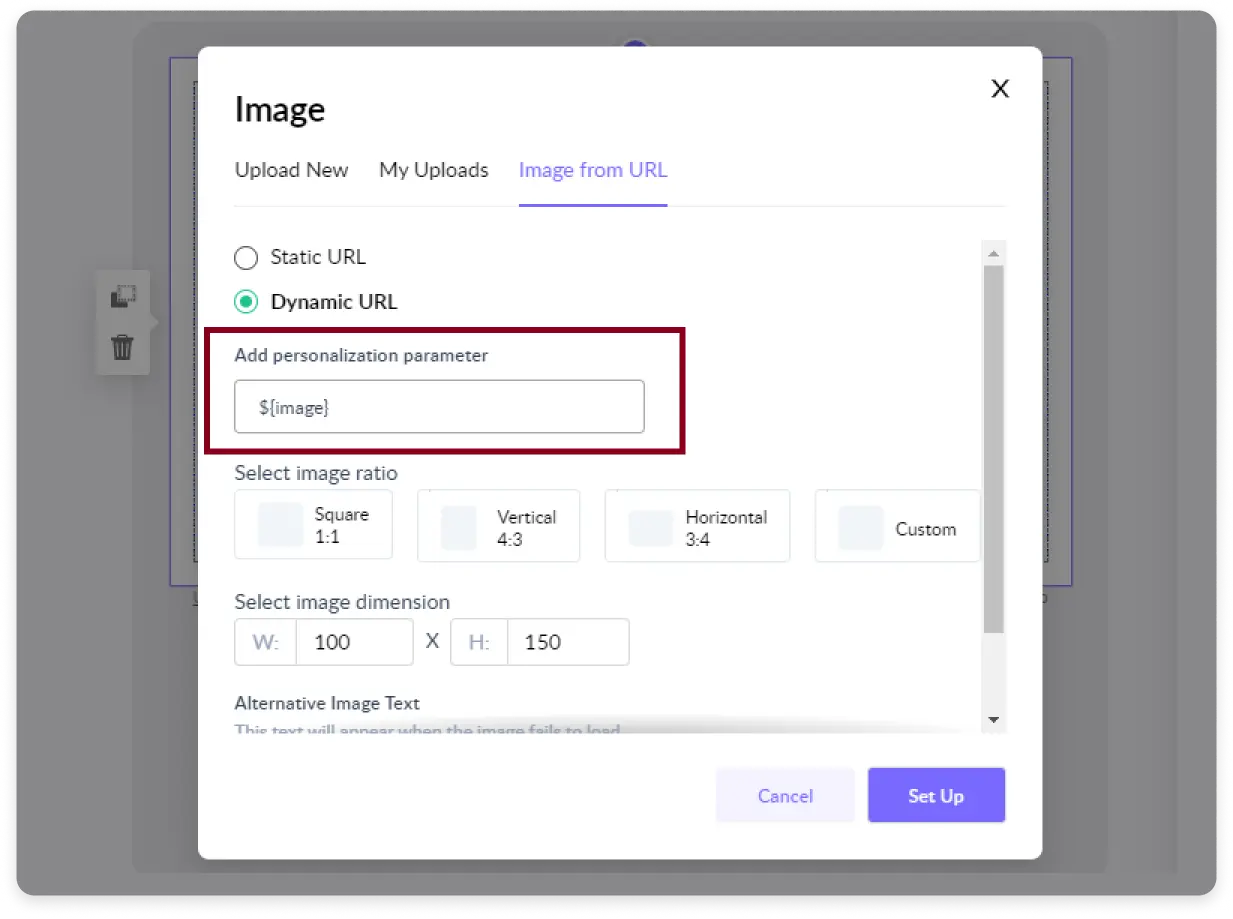
Note: You can do this mapping part later while choosing the email list to send.
Step 4: A placeholder image will appear once a dynamic URL is set up. Then, select send a campaign from the top right corner of the dropdown menu.
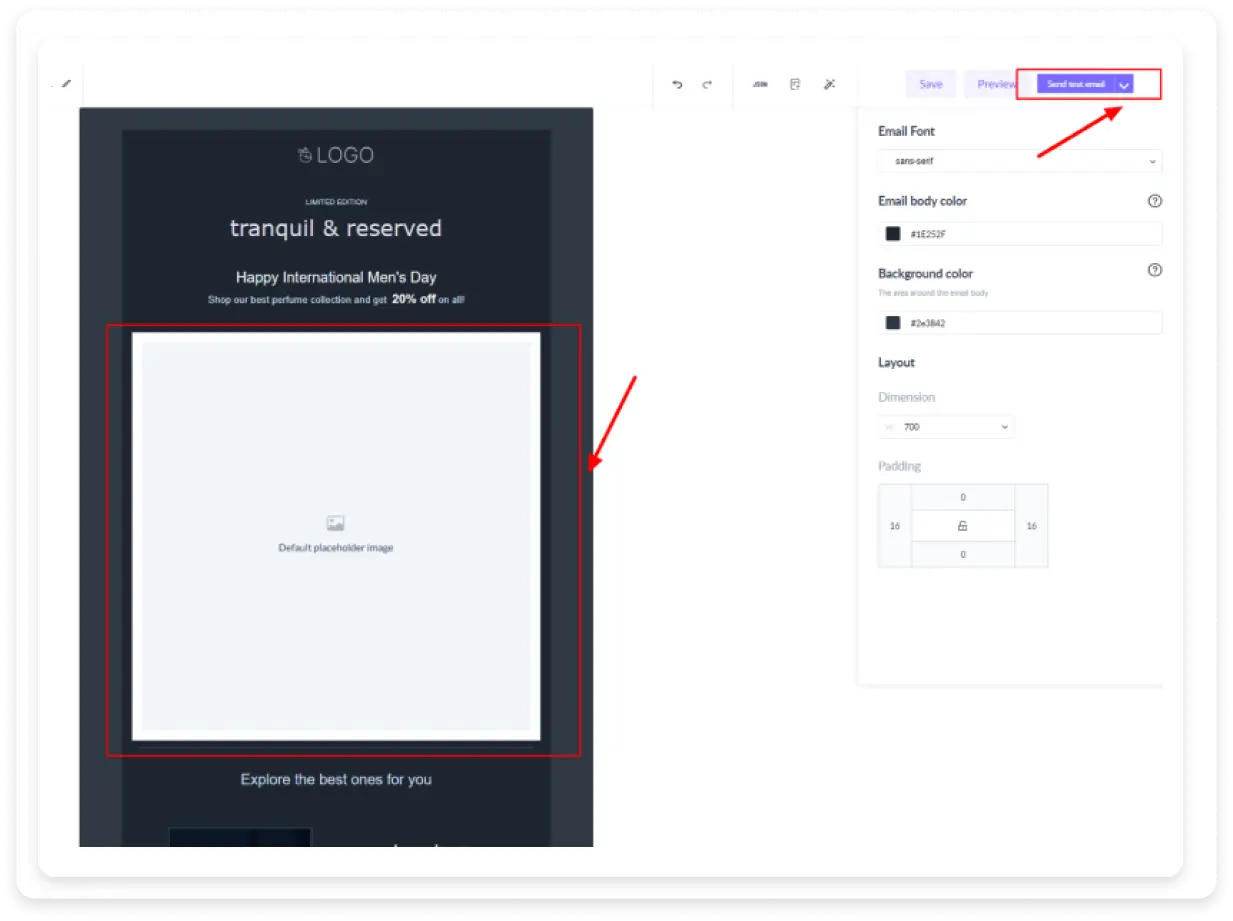
Step 5: Name your campaign and subject line, preheader text, and all the details. You can personalize the subject line by clicking on the personalization button. To do this, you must map the personalization parameter to your contact list.

Step 6: Now, choose your contact list. Once you click on the respective email list, a pop-up like this will appear. Here you need to map the image URL to the column header. (only if you didn't map it while uploading the image)
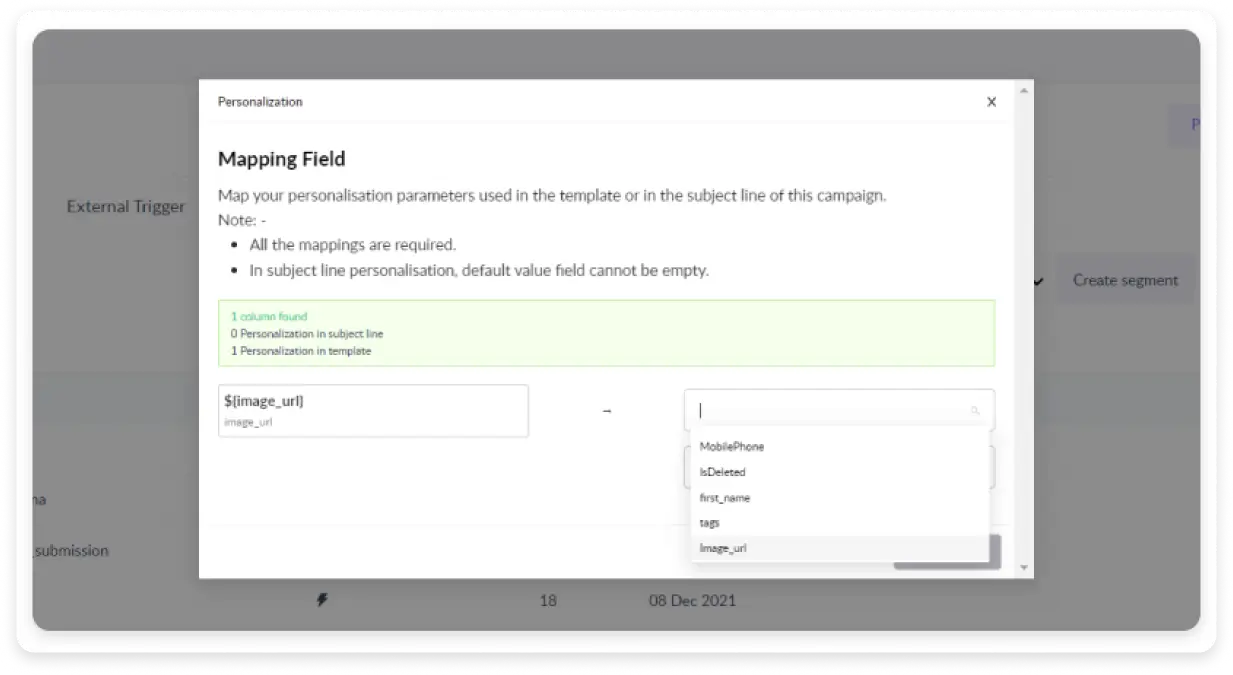
Step 7: The last step is previewing the email and sending or scheduling it.
Checkout our help guide on adding images dynamically in your emails
7 awe-inspiring dynamic content examples in email marketing
Steal these amazing examples by leading brands and add similar dynamic content in your future email campaigns:
1. Dynamic RSS feed in email by Mailmodo
News is constantly changing, so the news relevant in the morning might get outdated if users open their email at night. This presents the challenge of showing stale news that's no use to the reader.
But, with Mailmodo, The Indian Express developed a dynamic RSS feed in an email that resolved this issue by showing updated news thrice a day, no matter when the recipient opens their email.
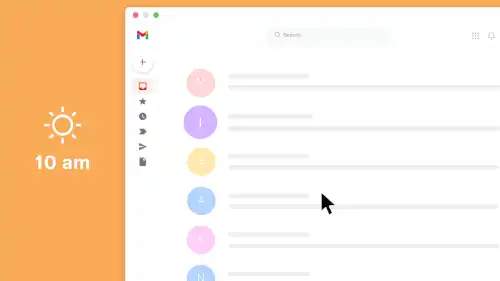
2. Device targeting using dynamic content by Topshop
One way to use dynamic content is to show a dynamic call to action based on the device used by the recipient to view the email. It will make emails more relevant as you give the right CTA based on the device.
For example, Topshop shows a different call to action for iPhone and Android users. If a user opens an email on Android, they'll see a link to download their app on the play store, while Apple users will see a link to the Apple store.
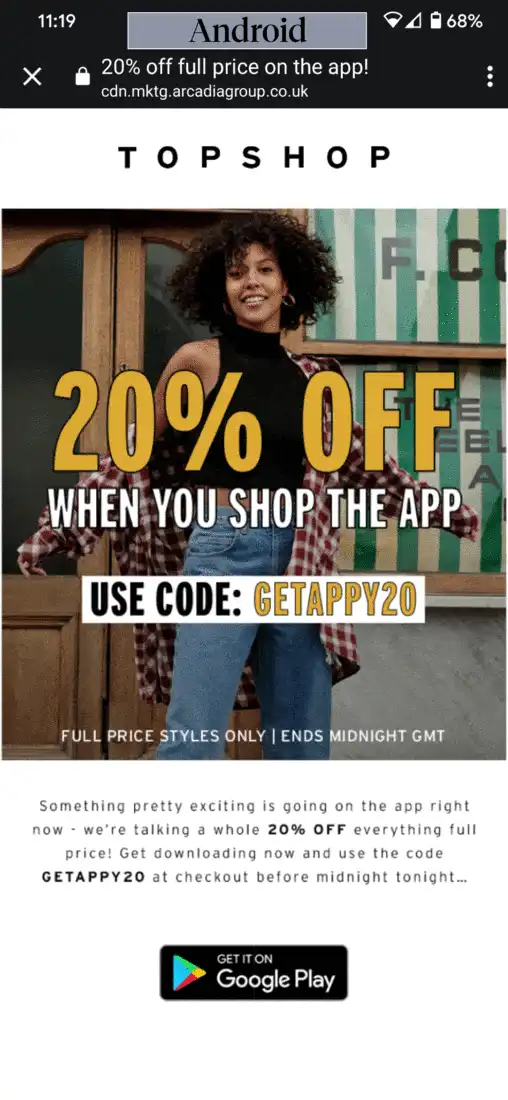
3. Adidas's gender-based dynamic content
Gender-based dynamic content is easy to create as you always have this data.
Adidas does this brilliantly by displaying different product images for men and women. They have made the images, and the text dynamic and web customized the text to complement the images. This is a simple way to target two different audiences using dynamic content to send them relevant emails.
This enhances the email's relevancy and helps you raise your conversion rate.
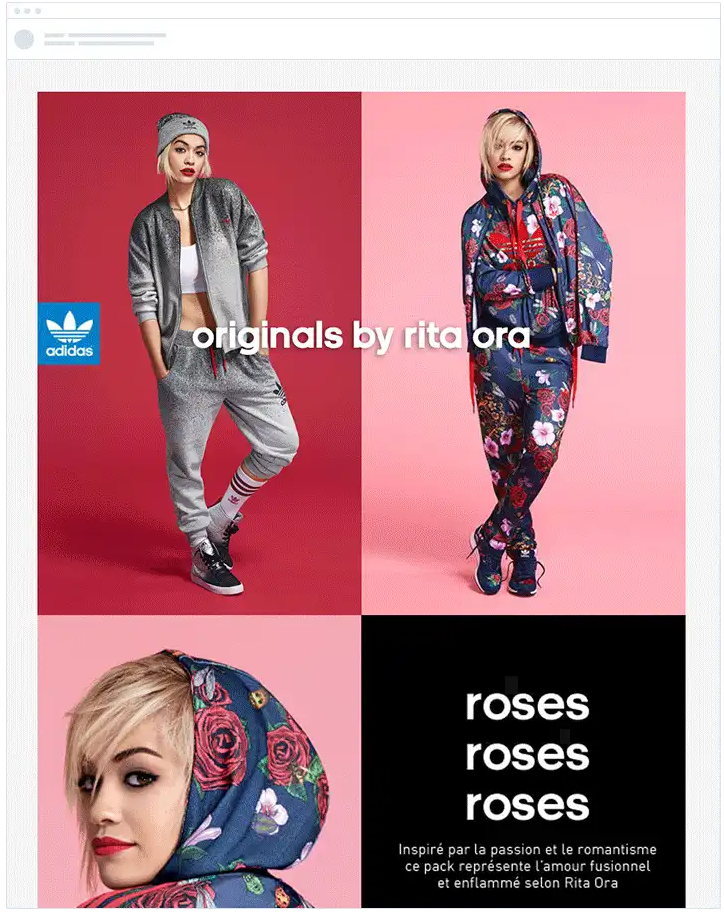
4. Dynamically updated countdown timers by Stripo
Countdown timers are the best example of dynamic content in the email. These timers give a real-time update to the recipient whenever they open their email.
For sales and promotional emails, dynamic timers create a fear of missing out and encourage recipients to take action immediately.
See how they're using countdown timers at the top in this email by Banana Republic. It catches the attention immediately.

5. Dynamic weather-based email
Use weather-based dynamic content in your email if your audience has accurate geographical data.
See how Allen Edmonds's dynamic email is based on weather conditions. If a recipient opened the email at temperatures greater than 40 degrees Fahrenheit, the creative on the left was displayed; if the temperature was less than 40 degrees, the creative on the right was displayed.
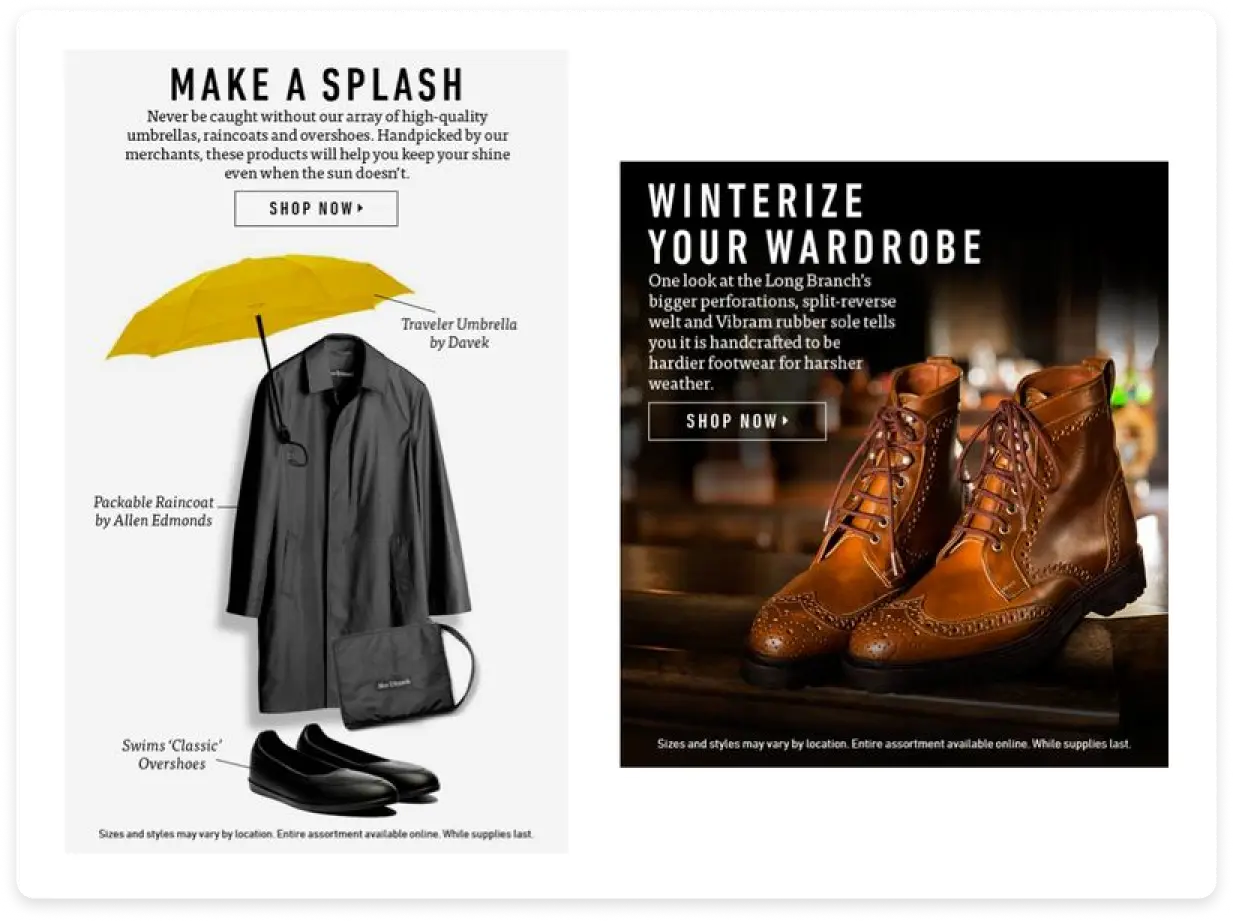
6. Post-purchase update using dynamic email
Instead of sending different emails for each update in the delivery process, why not create a single email and let the content update dynamically depending on whether the order is shipped or delivered?
This is possible with dynamic emails.
Here's an example of how Zembula creates purchase tracking dynamically using their smart block feature. Three emails show you how a single email will keep the user updated with the most relevant information.
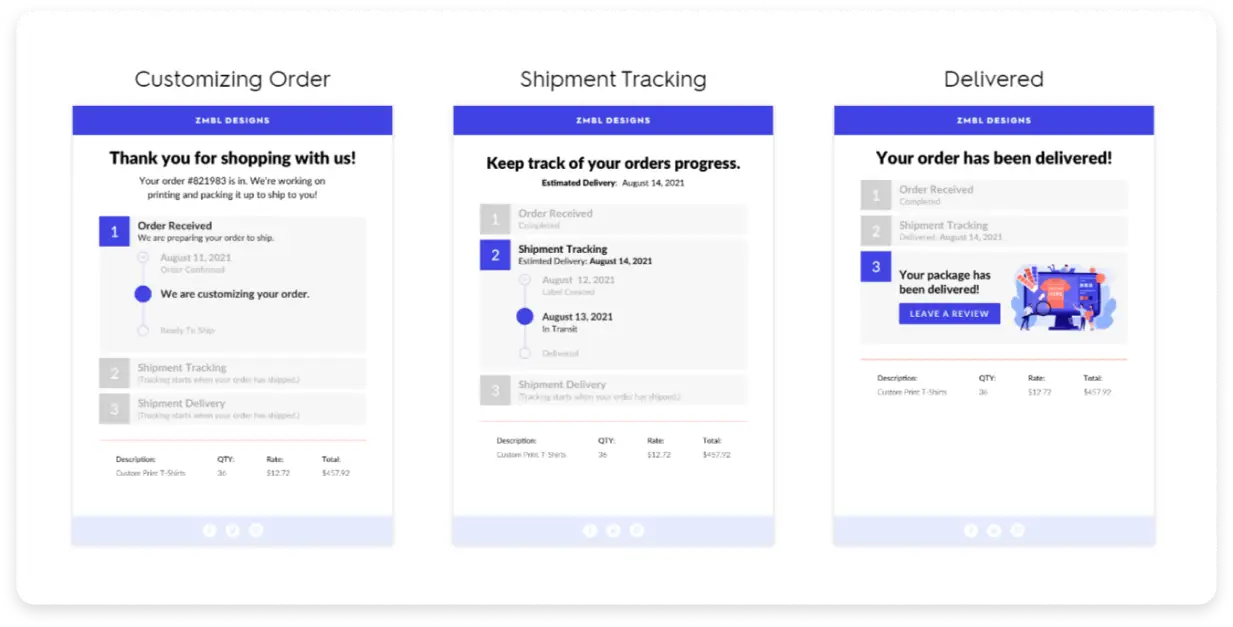
7. Dynamic store location map by Puma
By extracting the user's current location data, you can show the nearest store by giving a map link in the email. The email will dynamically update the nearest store location based on the user's current location when they open your email.
For instance, if a recipient has registered their location as India but opens your email when they are in London, then email content will update, showing them the nearest location of your store in London.
Here's an example of Puma and how they use dynamic locations to make recipients aware of nearby stores and direct users to visit them by making them easy to navigate.

Wrap up
Including dynamic content in your emails is the next big thing in email marketing, and we don't see it dying down anytime soon.
Even with just a few details about your audience, you can use them to send your subscribers relevant content and improve their engagement with your emails.
Combine the dynamic email content principles with automated email journeys for better content marketing that's hands-free.
What you should do next
Hey there, thanks for reading till the end. Here are 3 ways we can help you grow your business:
Talk to an email expert. Need someone to take your email marketing to the next level? Mailmodo’s experts are here for you. Schedule a 30-minute email consultation. Don’t worry, it’s on the house. Book a meet here.
Send emails that bring higher conversions. Mailmodo is an ESP that helps you to create and send app-like interactive emails with forms, carts, calendars, games, and other widgets for higher conversions. Get started for free.
Get smarter with our email resources. Explore all our knowledge base here and learn about email marketing, marketing strategies, best practices, growth hacks, case studies, templates, and more. Access guides here.


